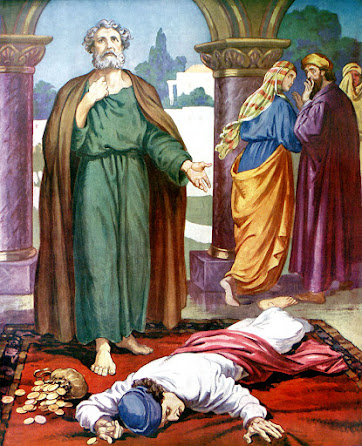The First Sunday of Advent - Year A
Matthew 24:36-44
Windows in worship spaces are intended to transform light by taking
the ordinary and making it sacred. In
churches such as ours, exterior light passes through stained glass to tell the
ancient story through word and image. In
spaces with clear windows, such as that old chapel, the effect is transform how
the outside world looks from the inside.
They allow the worshipper to see the world through the eyes of the
faith.
An old, large oak tree grew beside the chapel. From an inside, sitting position, the human
eye, looking through the window, was not able to take in the whole tree, much
less the entire landscape. The circular
view framed one the high-up limbs. All
that could be seen was a portion of the limb, a few of the branches stemming
from it, the leaves on those branches, and the sky. Still, during many of those preaching
classes, the view through the window was the most interesting thing going on!
The window’s limited perspective did something fascinating. Far from restricting what a person can see of
the world, its forced focus enhanced and deepened what was visible through it. On one day all in the window might be still,
while on another the leaves fluttered in a gentle breeze. With the advent of fall the color of the leaves
began to turn and then, in time, the foliage thinned out and eventually was
gone. The bareness gave way to budding
in the spring, which in time became new, green blooms. The sky itself was never the same – clear
blue or filled with billowing clouds or overcast or rainy or dotted with flakes
of snow. It was like a painting, except
it was alive, dynamic, and ever-changing.
The original designer of the chapel did not install the window
to distract daydreamers such as me, but rather, to invite the worshipper to
look out on the world with the eyes of faith; to see the world as our faith holds
it to be – a wonderful creation of God every bit as splendid as the man and the
woman fashioned from the dust of the earth.
The window beckons the worshipper, upon leaving the chapel, to live and
move and have one’s being in a world now held to be sacred and holy.
The readings for the First Sunday of Advent implore us to wake
up and keep watch for our Lord’s coming.
Jesus famously describes a time two men will be working in the field and
two women working at a mill. One man and
one woman will be taken away while the other two will be left behind. It is an image providing fuel for much of the
rapture theology that holds Jesus will call the faithful up into the sky while
the unfaithful will be left behind to fight it out in some kind of hellish
existence. It is a literal notion based
on strikingly bad biblical interpretation.
Jesus states clearly the days to come will be like the days of Noah when
a few were saved while others were swept away by the flood. Thus, as Jesus tells his story, it is the ones
who are left behind who are saved while the ones who taken away are lost.
Rapture theology – with its left behind vision of apocalyptic
doom – has had the effect in some circles of creating a callous and careless
disregard for the role and fate of God’s Creation. What difference does it make what happens to
the environment when God is going to save the ‘good’ people from it? Combine this with a heightened sense of
entitlement stemming from God’s command to Adam to have dominion over Creation
and you get a misguided theological underpinning supporting indifferent to
ecological disaster.
The force of Scripture asserts the earth is the Lord’s. It asserts God’s concern for the care and
well being of every living creature. And
it asserts there is a song of Praise sung by Heaven and by Nature.
I am so pleased with everyone’s willingness to do something
different during our Advent worship and I am curious to see where it will take
us. I look forward to seeing what you
might add to our visual chorus of Nature in this space. I am interested to see how our liturgy will
wear after a few weeks (will it break in like a pair of comfortable shoes or
wear thin). Most of all, I wonder how
this entire experience will be like gazing through that chapel window; an experience
allowing us to look on Creation through the eyes of faith. I wonder what it will be like for us to wake
up and sing again with Heaven and Nature the song of the Creator’s praise.



No comments:
Post a Comment